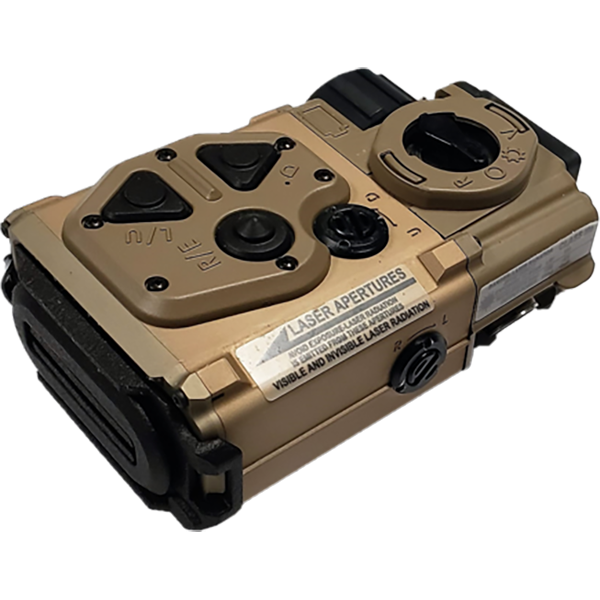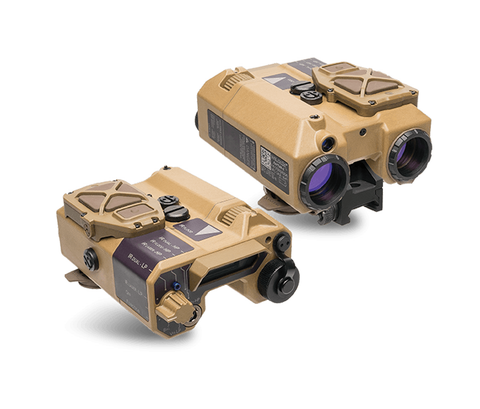"RAPTARs on MARS" - Weighing System Complexity vs. Workflow Simplification
[Scope + Weapon Mounted LRF] vs [BinoLRF + RDS]
(integrated azimuth/bearing to reduce glass (bino->scope) transition time?)
----------
RAPTARs et al. look cool for sure, adds weight but not too much - probably not optimally suited for PRS but more practical shooting styles (NRL/CD - "field matches") may have its benefits, but I wonder if these(WMLRF) truly are beneficial once in use (daylight) - or are they just redundancies and more-so useful fo night shooting?
A) Inside 400yd I think a WMLRF wouldn't be a great ROI - a pocket mono LRF or simply "eyeballing" distance can suffice in most scenarios, no?
B) 400-800yds with blind stages and semi hidden targets IDK if using your scope to find a target is going to help your overall speed to impact. Id guess that using a binoLRF would be the quickest way to find and range targets in that scenario; at that point what value is the WMLRF giving you other than confirming your binoLRF distance is similar? Plus you still have the issue of switching from bino to scope and reacquiring the target; even though you have an idea of targets general direction.
C) 800-1500yd I think a WMLRF would be pretty beneficial in workflow simplification (but at those ranges you normally have more time to shoot anyway...idk). Though I do think this is were WMLRF would shine, for daylight shooting - I [understand/more read a lot] that WMLRF is most useful for distance night shooting, no?
--------
The most useful (day) applications I can think of for WMLRF would be on open area stages with multiple, easily recognizable targets. In these cases you could see the targets that you need to hit with little issue, so find target area with RDS or [barrel slice], transition to scope and fine tune into target, click WMLRF for range/elevation solution, input ballistic answer into scope/hold (maybe clean up a wind call), fire - move to next target "XXXft to the right/left" and repeat.
Point being a WMLRF doesn't seem (at superficial glance) universally superior to binoLRF or even a pocket rangefinder (which I want to be wrong about, chime in with your thoughts/experiences behind rifles with WMLRF's and how your workflow is enhanced - or other intangible benefits that I likely missed). It seems to have limited application and won't replace a binocular for the [target acquisition/finding] portion in most cases.
Another way of approaching this - In your experience why/is a WMLRF 'juice worth the squeeze' given the price point on them is almost $10k?
---------------------
As a side note: A helpful improvement I can think of to increase overall speed (minimize transition time from finding target in bino --> scope on target) would be to have a compass azimuth integrated on both binoculars and WMLRF. That way you can use it as an 'indexing point' to get close enough to target vicinity during bino to scope transitions.
So I guess im wondering if 'azimuth' is displayed on WMLRF's like RAPTAR, or more likely the new Envision MARS?
-------
[Scope + Weapon Mounted LRF] vs [BinoLRF + RDS]
(integrated azimuth/bearing to reduce glass (bino->scope) transition time?)
----------
RAPTARs et al. look cool for sure, adds weight but not too much - probably not optimally suited for PRS but more practical shooting styles (NRL/CD - "field matches") may have its benefits, but I wonder if these(WMLRF) truly are beneficial once in use (daylight) - or are they just redundancies and more-so useful fo night shooting?
A) Inside 400yd I think a WMLRF wouldn't be a great ROI - a pocket mono LRF or simply "eyeballing" distance can suffice in most scenarios, no?
B) 400-800yds with blind stages and semi hidden targets IDK if using your scope to find a target is going to help your overall speed to impact. Id guess that using a binoLRF would be the quickest way to find and range targets in that scenario; at that point what value is the WMLRF giving you other than confirming your binoLRF distance is similar? Plus you still have the issue of switching from bino to scope and reacquiring the target; even though you have an idea of targets general direction.
C) 800-1500yd I think a WMLRF would be pretty beneficial in workflow simplification (but at those ranges you normally have more time to shoot anyway...idk). Though I do think this is were WMLRF would shine, for daylight shooting - I [understand/more read a lot] that WMLRF is most useful for distance night shooting, no?
--------
The most useful (day) applications I can think of for WMLRF would be on open area stages with multiple, easily recognizable targets. In these cases you could see the targets that you need to hit with little issue, so find target area with RDS or [barrel slice], transition to scope and fine tune into target, click WMLRF for range/elevation solution, input ballistic answer into scope/hold (maybe clean up a wind call), fire - move to next target "XXXft to the right/left" and repeat.
Point being a WMLRF doesn't seem (at superficial glance) universally superior to binoLRF or even a pocket rangefinder (which I want to be wrong about, chime in with your thoughts/experiences behind rifles with WMLRF's and how your workflow is enhanced - or other intangible benefits that I likely missed). It seems to have limited application and won't replace a binocular for the [target acquisition/finding] portion in most cases.
Another way of approaching this - In your experience why/is a WMLRF 'juice worth the squeeze' given the price point on them is almost $10k?
---------------------
As a side note: A helpful improvement I can think of to increase overall speed (minimize transition time from finding target in bino --> scope on target) would be to have a compass azimuth integrated on both binoculars and WMLRF. That way you can use it as an 'indexing point' to get close enough to target vicinity during bino to scope transitions.
So I guess im wondering if 'azimuth' is displayed on WMLRF's like RAPTAR, or more likely the new Envision MARS?
-------
Last edited:





